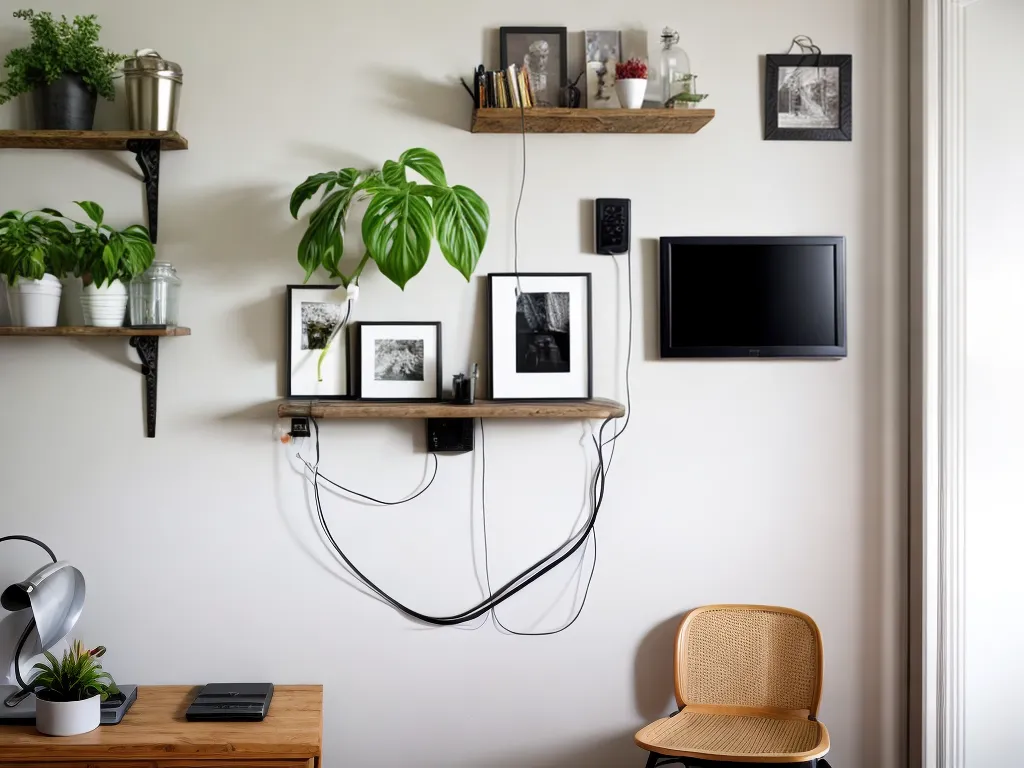
How to Hide Unsightly Wires Around Your Home
Wires and cables can quickly clutter your home's interior. Unsightly cords from lamps, TVs, computers, and other devices take away from your home's style. Luckily, there are easy ways to conceal wires to create a polished, professional look. In this guide, I will share my tips for hiding wires in any room.
Use Cable Management Boxes
One of the simplest wire hiding solutions is a cable management box. These plastic containers have ports to thread cables through while keeping the excess length contained inside.
I like to place cable management boxes behind furniture like TV stands and desks. The boxes blend right in, and I can conveniently run cables through the ports directly to outlets. This hides piles of tangled wires down to a single thin cord.
Some key tips when using cable management boxes:
- Choose a box with enough ports and space for your needs. Measure cord lengths to ensure it will accommodate them.
- Stick with neutral colors like black or white for seamless blending.
- Affix boxes in place with adhesive strips or screws for stability.
- For desks, run cables down the rear leg to keep the front completely clear.
Route Wires Along Baseboards
Another easy wiring solution is using your existing baseboards to conceal cords. This helps wires blend into the room rather than dangle randomly.
To do this, I attach plastic cable clips or hooks at intervals along my baseboards using adhesive, screws, or nails. I route lamp, computer, and other low-voltage cables along the clips, hugging the baseboard tightly. Painting the clips the same color as my walls makes them practically disappear.
Key pointers for the baseboard method:
- Place clips/hooks no more than 12 inches apart for optimal support.
- Minimize visibility by running cords along corners and textured walls.
- If you have molding, run cables behind it for an even cleaner look.
- Painting cords to match your walls can make them less noticeable.
Hide Wires Under Rugs
Rugs are an easy way to conceal floor-running wires without much work. The dense padding of rugs helps muffle electrical cords so you can't feel them underfoot.
When wiring a floor lamp or other device, I situate it so the excess cord can run under an area rug. I line up the edges carefully to keep the hidden wires securely in place.
If wires run to a device only partially covered by a rug, I tape down any exposed sections with rug tape. This helps hold them flat and less noticeable against the floor.
Some tips for concealing wires under rugs:
- Heavier rugs with thick pile do the best job hiding cords.
- Avoid running wires under high-traffic areas to prevent tripping hazards.
- Check that wires have slack and aren't stretched taut under the rug.
- Use flat or low-profile cables that maintain a thinner rug profile.
Run Wires Through Walls and Floors
For a completely seamless look in a new or remodeled home, wiring can be routed inside walls, floors, and ceilings. This fully conceals wires but requires professional installation for safety and proper building code compliance.
In-wall wiring involves running cables inside wall cavities. Outlets are installed at needed locations, with wires concealed behind drywall. This gives a streamlined look without any exposed wires.
Wires can also be routed through floor conduits drilled between levels. Cables pass vertically between floors to connect upstairs and downstairs devices. Conduits are then covered by flooring for discrete wire management.
Interior design professionals can advise on integrating wiring into your space during construction. Pre-planning helps ensure adequate power access where needed.
Maintain Concealed Wires
Whatever wire-hiding solution you use, be sure to regularly check that cables are still neatly maintained. As you unplug and move devices over time, it's easy for concealed wires to become loose and tangled.
I schedule brief wire maintenance along with seasonal home cleaning. I check cable positioning behind furniture and tape adhesion, resecuring anything loose. It only takes a few minutes to keep my hidden wires in their concealed state.
With some clever solutions, you can banish messy wires from your home. Use cable boxes, baseboard routing, floor coverings, in-wall installation, and occasional maintenance to achieve an inviting decluttered space. Your home's style will shine without the distraction of tangled cables.